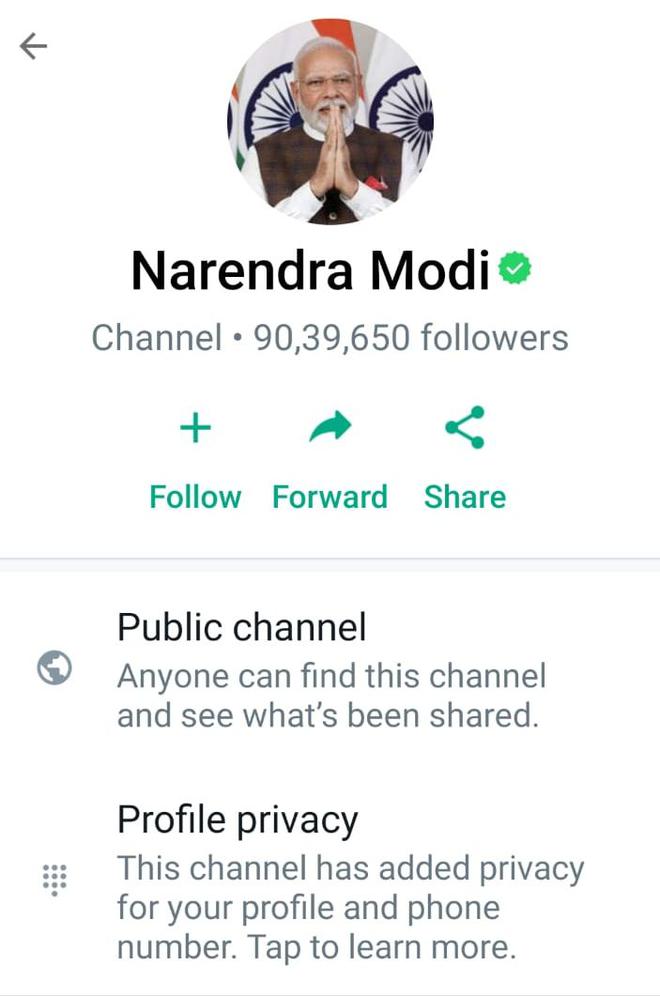Political leaders are quietly establishing a base on WhatsApp Channels, a one-way broadcasting medium launched here in September by the messaging platform. Soon after the launch, Prime Minister Narendra Modi’s official account appeared, and has so far garnered almost 9 million followers.
The feature is among the most direct means of communication for political leaders, at least to voters who have smartphones, a number that is rapidly expanding. Deloitte has estimated that India will have one billion smartphone users by 2026; most of these phones are likely to have WhatsApp installed.

Other Bharatiya Janata Party leaders were quick to establish their own channels. The feature represents WhatsApp’s evolution from a tool in political outreach — through dedicated groups and forwarded messages, especially before elections — to a full-fledged medium in and of itself, where leaders can reach audiences directly and immediately.
Ministers, Opposition leaders join
Home Minister Amit Shah is one of the other new entrants (17,000 followers), as are Minister of Minority Affairs and Women & Child Development Smriti Irani (2,000 followers), and Minister of State for Electronics and Information Technology Rajeev Chandrasekhar (22,000 followers). These leaders have not made any public announcement promoting their WhatsApp Channels, but followers are growing steadily.
Also read | Telangana CMO’s WhatsApp channel to disseminate info in real time
Opposition leaders have also quickly established their bases. Congress president Mallikarjun Kharge created his channel on September 19, the same day as Mr. Modi, while former Congress chief Rahul Gandhi did so the following day.
Campaign tool
Mr. Modi’s first post on his channel was a picture of himself, sitting at a desk in the new Parliament building. He soon made it clear that partisan messaging would be a key part of his presence on the platform, alongside Prime Ministerial messages. “People of Chhattisgarh are tired of the mis-governance of Congress,” he posted on September 30, along with pictures of a Bilaspur rally. The State is due for elections at the end of this year.
Soon, Mr. Modi also started posting messages in Hindi, taking a shot at the Congress party’s amplification of demands for a caste census. Mr. Gandhi has used his channel to post pictures and videos of his visits to a gurdwara, and of him joining railway porters demanding pay increases. On Thursday, he broadcast a link to a post on X (formerly Twitter), posting a video with a caption accusing Mr. Modi of being against people living in poverty.
State agenda
Ministers also used their channels to talk about their work, and to advance the government’s priorities. Mr. Chandrasekhar of the IT Ministry posted about the notices sent to Telegram, X, and YouTube to restrict child sexual abuse material. Mr. Shah posted a link on Thursday to a post on X about the anti-terrorism conference he presided over.
Uttar Pradesh Chief Minister Yogi Adityanath (3,83,000 followers) has been particularly active, with the channel run by the Chief Minister’s Office regularly posting not just content from his other social media handles, but the full text of press releases issued by the office.
Meta’s shift
The actual impact of messages from leaders directly reaching millions of phones will become clearer in the coming months, as political leaders and their outreach teams work out what strategies perform best on this new medium. In the meantime, the launch of channels already represents a cautious recalibration in how Meta — the parent company of WhatsApp as well as Facebook and Instagram — approaches political content.
In 2021, the company announced that it would reduce the level of political content on Facebook’s news feed, which remains popular in India, even as Instagram has started to outshine it. Meta had then said that it wanted content on Facebook to be based on “learning what is informative, worth [users’] time or meaningful to them.”
However, demand for a broadcast feature was strong, and Meta tried out WhatsApp Channels in Colombia and Singapore from June this year, rolling it out globally in September. “Building channels is a big step our users have asked us to take for years,” the company had said last month in a blog post. “We think the time is finally right” to do so, it added.







